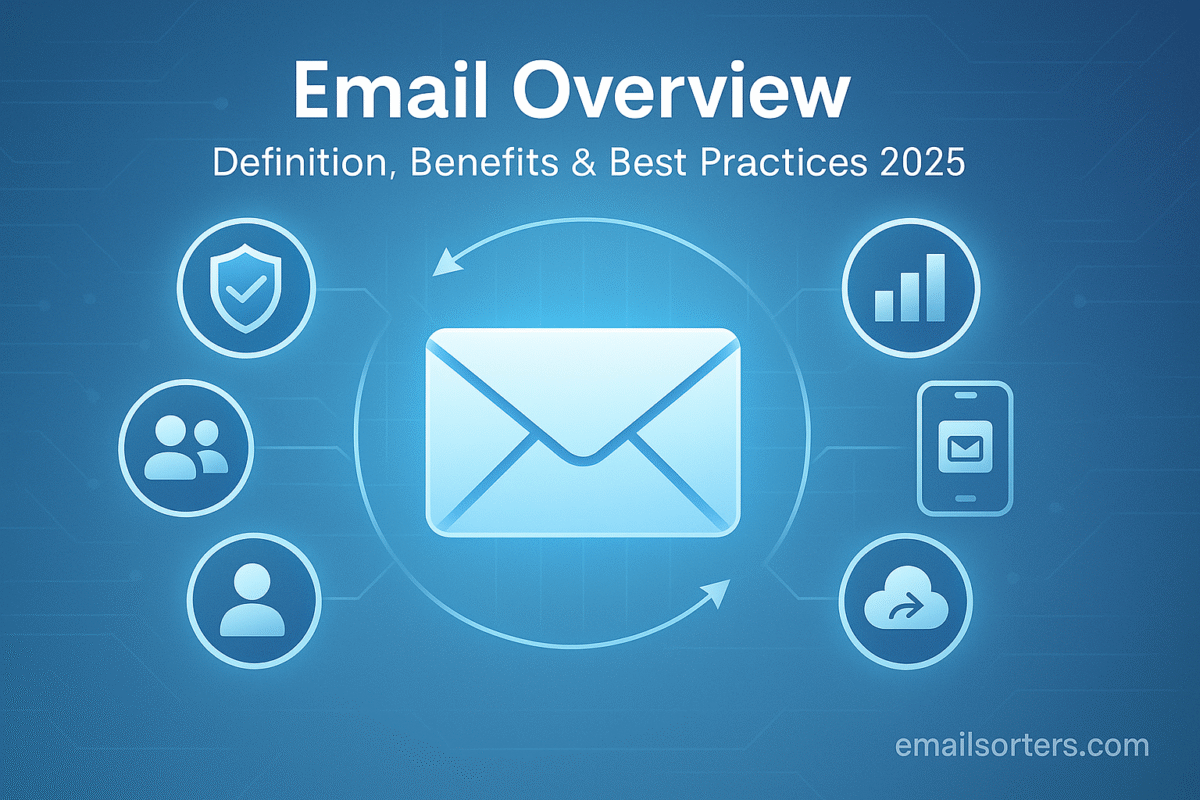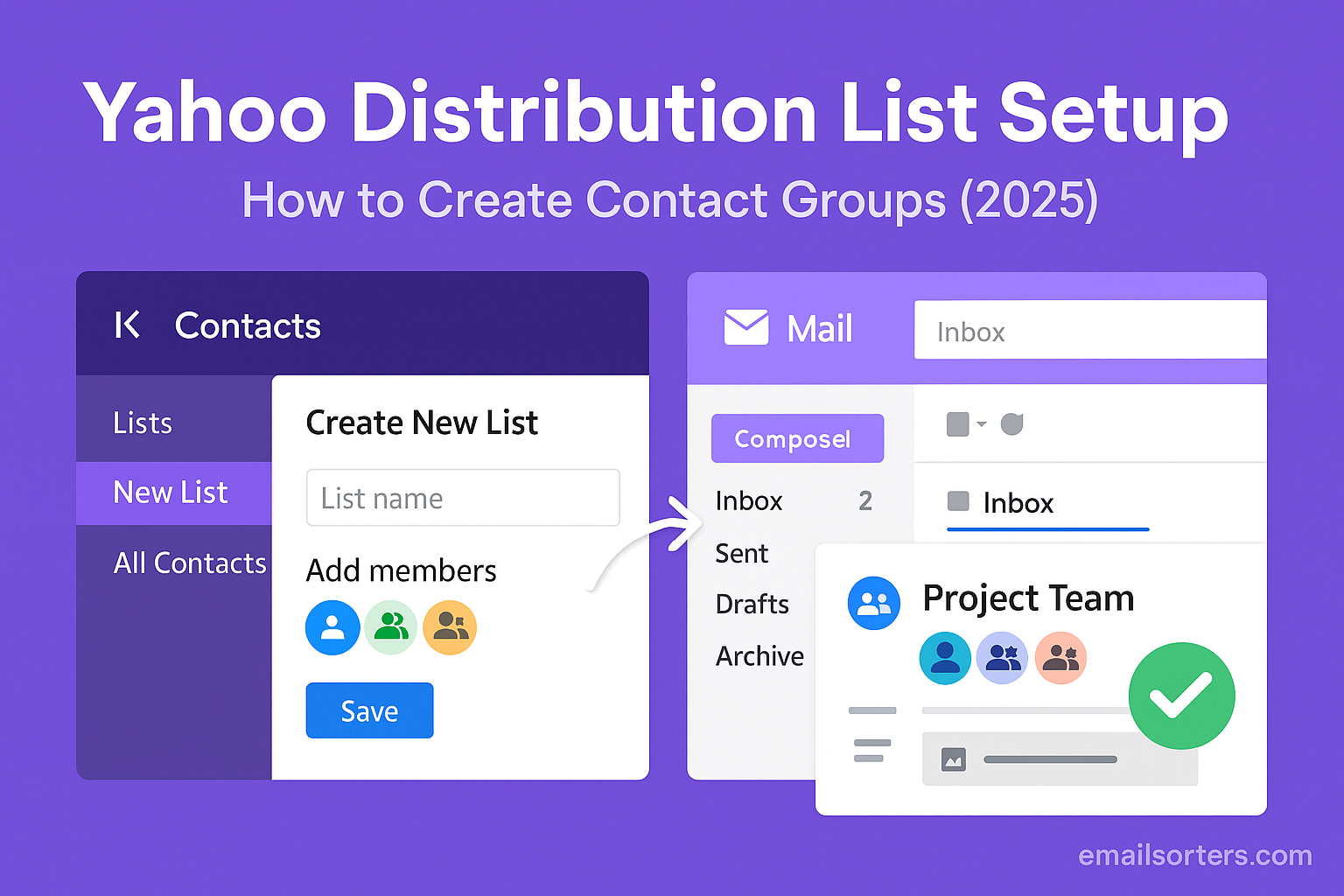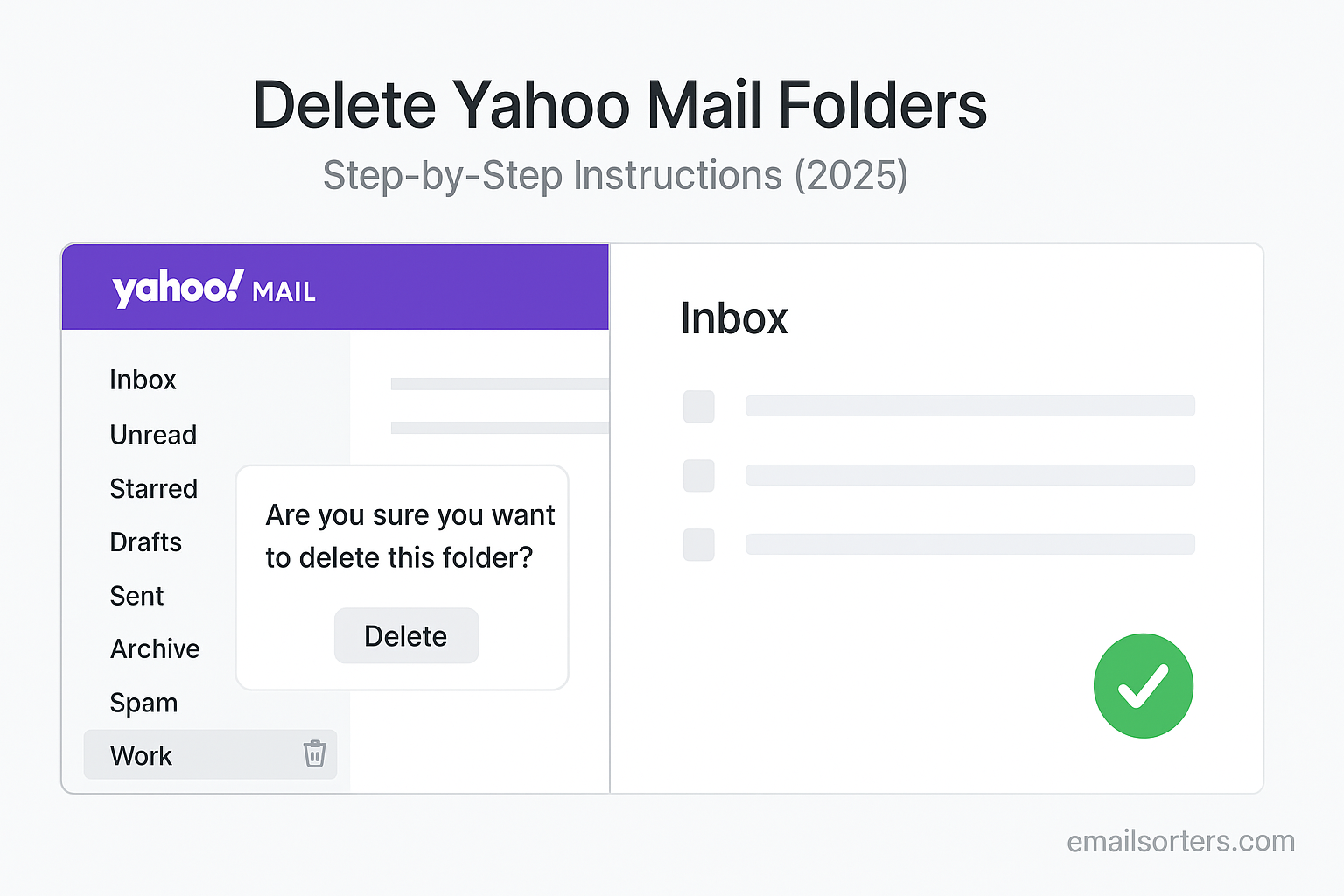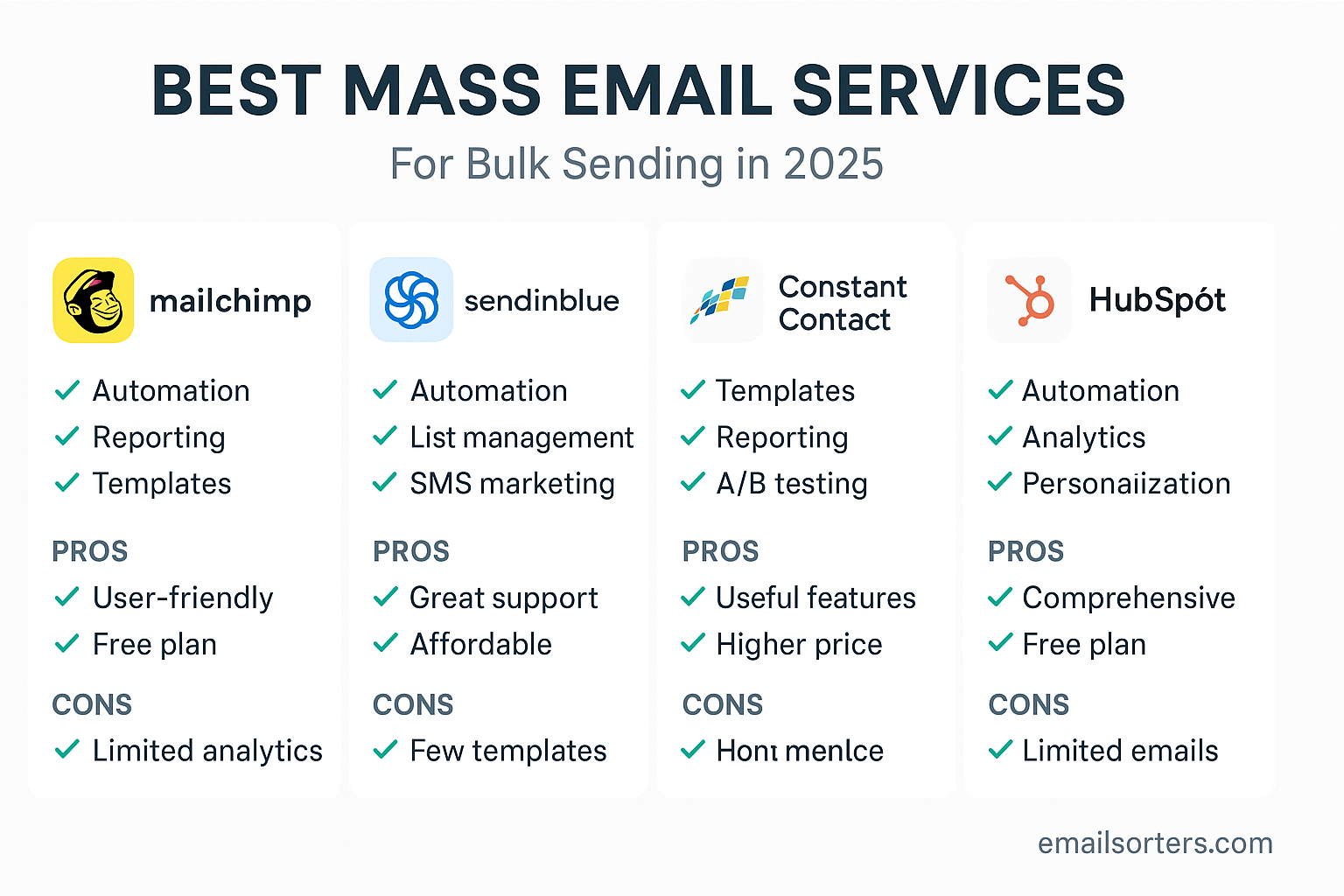Email is a digital system for exchanging messages through electronic devices. Despite the rise of instant messaging and social media, it remains the cornerstone of digital communication for both personal and professional worlds. Its ability to send, receive, and store information reliably makes it an indispensable tool. Understanding its core functions, benefits, and best practices is essential for effective communication in 2025. This guide provides a comprehensive overview of everything you need to know.
What Exactly Is Email?
Email has become so integrated into daily life that we rarely pause to consider its mechanics. At its core, it is a simple yet powerful technology. It allows users on a network to send text, files, and images to other users. This process happens almost instantly, connecting people across the globe in seconds. Its formal nature and ability to create a permanent record set it apart from other digital communication methods.
A Clear Definition of Electronic Mail
Electronic mail, commonly known as email, is a service that enables users to send and receive messages over a computer network. These messages are stored in a recipient’s electronic mailbox until they are accessed. Unlike real-time chat, email is an asynchronous form of communication. This means participants do not need to be online simultaneously to interact. It provides a flexible and documented way to exchange information.
How Email Fundamentally Works
The email system operates much like a digital postal service. When a user sends an email, their email client connects to their mail server using a protocol called SMTP (Simple Mail Transfer Protocol). The sender’s SMTP server then locates the recipient’s mail server and transfers the message. The recipient’s server places the message in their mailbox. The recipient later retrieves this message from their server using protocols like IMAP (Internet Message Access Protocol) or POP3 (Post Office Protocol 3). This entire process ensures reliable delivery from sender to receiver.
The Key Components of an Email Message
Every email is composed of several standard parts that help structure the communication. The “From” field identifies the sender. The “To” field specifies the primary recipient or recipients. “Cc” (Carbon Copy) includes others for informational purposes, while “Bcc” (Blind Carbon Copy) does so without revealing the recipients to each other. The Subject Line provides a concise summary of the message’s content. The Body contains the main message itself. Attachments allow for the inclusion of files, and the Signature provides the sender’s contact information.
Why Email Remains Essential in 2025
In an age of countless communication apps, email’s relevance continues to grow. It serves as a digital identity and a central hub for our online lives. From password resets to official business correspondence, it is the default channel for important information. Its structure and permanence offer distinct advantages that newer technologies cannot replicate.
Unmatched Reach and Accessibility
Virtually everyone with an internet connection has an email address. This universal adoption makes it the most reliable way to reach a broad audience. It does not require users to be on the same platform or app. This accessibility is crucial for businesses, organizations, and individuals needing to communicate with diverse groups of people. It breaks down barriers present in closed-messaging ecosystems.
A Formal Record of Communication
Emails provide a written, time-stamped record of conversations. This is invaluable for business transactions, agreements, and professional correspondence. It serves as a reliable document that can be archived and retrieved for future reference. This level of formality and permanence is not offered by most instant messaging platforms, where conversations can be transient and difficult to track.
Direct and Personal Channel for Marketing
For businesses, email marketing consistently delivers a high return on investment. It allows companies to speak directly to customers who have opted to receive their communications. This direct line fosters a more personal connection than general social media posts. Marketers can segment their audiences and tailor messages for specific groups, increasing engagement and driving results. It is a permission-based channel that respects user choice.
Cost-Effective and Efficient Communication
Sending an email costs virtually nothing. This makes it an incredibly cost-effective tool for communicating with one person or thousands. Companies can distribute newsletters, announcements, and updates without incurring printing or postage costs. The efficiency of sending a single message to a large group saves significant time and resources compared to individual phone calls or physical mailings.
The Core Types of Email Communication
Email is not a one-size-fits-all tool. Its application varies widely depending on the context and purpose. Understanding the different types of email helps in crafting more effective messages. Each category serves a unique function, from casual personal chats to critical business operations.
Personal Email for Everyday Life
Personal email is used for informal communication with friends and family. It is also the hub for managing one’s digital life. This includes receiving bills, social media notifications, and confirmations from online services. While less formal, personal email still benefits from clear communication and organization to keep track of important information and personal correspondence.
Professional Email for Business Operations
In a professional setting, email is the primary tool for internal and external communication. It is used for everything from project updates and meeting arrangements to client negotiations and formal announcements. Professional emails demand a high standard of etiquette, clarity, and precision. They represent not just the individual sender but also the organization they work for.
Transactional Emails for Automation
Transactional emails are automated messages triggered by a user’s action. Common examples include password reset links, purchase receipts, and shipping notifications. These emails are functional and expected by the user. They are critical for customer service and operational efficiency. Their primary purpose is to deliver timely and relevant information related to a specific transaction or request.
Marketing Emails for Promotion and Engagement
Marketing emails are sent to a list of subscribers to promote a product, service, or brand. This category includes promotional newsletters, special offers, and informational content designed to nurture leads. Effective marketing emails provide value to the recipient. They aim to build a relationship with the audience over time, ultimately driving sales and brand loyalty.
Choosing the Right Platform: An Overview of Providers
An email service provider is the company that offers email hosting and services. They manage the servers and technology that power your inbox. While many providers exist, a few major players dominate the market. Understanding the differences between them can help users select the service that best fits their needs. For a detailed breakdown, a guide on how email providers explained their services is a valuable resource.
Understanding How Email Services Function
Email providers give users an interface to access their mailboxes. They also handle the complex back-end processes of sending, receiving, and filtering messages. Key features often include spam filtering, cloud storage, and integration with other applications like calendars and contact managers. The choice of a provider impacts user experience, security, and available features.
The Dominance of Major Players
The email landscape is led by a handful of technology giants. These providers have attracted billions of users by offering robust features, significant storage, and reliable service, often for free. Analyzing market share provides insight into which platforms are most prevalent. This data is crucial for marketers and developers who need to ensure compatibility and optimize their communications for the most widely used clients.
Insights from Gmail Statistics
Gmail is a leader in the email space, known for its intuitive interface and powerful search capabilities. Its integration with the broader Google ecosystem makes it a popular choice for both personal and professional use. A deep dive into current Gmail statistics reveals its massive user base and market influence, highlighting its importance in the digital communication landscape.
The Corporate Strength of Outlook
Outlook, formerly Hotmail, is another dominant force, particularly in the corporate world. Its seamless integration with Microsoft Office applications makes it the default choice for many businesses. It offers advanced features geared toward productivity and collaboration. Reviewing Outlook statistics shows its strong foothold in professional environments and its continued relevance.
The Legacy and Evolution of Yahoo Mail
Yahoo Mail was one of the first major free email providers and still maintains a significant user base. It has evolved over the years, offering generous storage and features to compete in a crowded market. Examining Yahoo statistics provides a perspective on its enduring presence and the loyalty of its users.
Email Best Practices for Maximum Impact in 2025
Sending an email is easy, but sending an effective email requires skill. Following established best practices ensures your messages are read, understood, and acted upon. From the subject line to the final closing, every element contributes to the overall impact of your communication. These principles apply to all types of email.
Crafting the Perfect Subject Line
The subject line is the most important part of an email. It is the first thing a recipient sees and often determines whether the message is opened. A good subject line is clear, concise, and relevant to the email’s content. It should accurately summarize the purpose of the message in just a few words. Vague or misleading subject lines are often ignored or marked as spam.
Writing a Clear and Professional Email Body
The body of the email should be easy to read and understand. Use short paragraphs and simple language. Get straight to the point in the opening sentence. If you are requesting action, make it clear what you need the recipient to do. A well-structured message respects the recipient’s time and increases the likelihood of a prompt and accurate response.
Mastering Email Etiquette
Professional email etiquette is crucial for maintaining positive relationships. Always use a polite greeting and closing. Respond to messages in a timely manner. Use the “Cc” and “Bcc” fields thoughtfully, only including people who truly need to be on the email chain. Avoid using all caps, as it can be interpreted as shouting. Proofread every message before sending it to avoid typos and grammatical errors.
Managing Attachments Effectively
When sending attachments, it is best practice to keep file sizes small. If a file is too large, consider using a cloud storage service to share a link instead. Always name your files clearly and logically. It is also helpful to mention the attachment in the body of the email to ensure the recipient does not overlook it. For example, “I have attached the quarterly report for your review.”
Essential Email Security and Management Practices
Email accounts are a primary target for cybercriminals because they contain a wealth of personal and sensitive information. Protecting your account is crucial for safeguarding your digital identity. At the same time, effective inbox management is key to staying productive and avoiding information overload.
Recognizing and Avoiding Phishing Scams
Phishing is a fraudulent attempt to obtain sensitive information by disguising as a trustworthy entity in an email. Red flags include urgent requests for personal data, generic greetings, poor grammar, and suspicious links or attachments. Always verify the sender’s email address. Hover over links to see the actual destination URL before clicking. Be skeptical of any unsolicited email that asks for confidential information.
The Importance of Strong, Unique Passwords
A strong password is your first line of defense. Use a long combination of uppercase and lowercase letters, numbers, and symbols. Avoid using easily guessable information like birthdays or common words. Most importantly, use a unique password for your email account that you do not use for any other service. Enabling two-factor authentication adds an extra layer of security that is highly effective at preventing unauthorized access.
Organizing Your Inbox for Productivity
An overflowing inbox can be a major source of stress and lost productivity. Developing a system for managing your messages is essential. Effective strategies can transform your inbox from a cluttered space into a streamlined work tool.
- Use Folders or Labels: Create categories for different projects, clients, or types of communication. This makes it easier to find specific messages later.
- Archive, Don’t Delete: Instead of deleting messages you might need later, archive them. This removes them from your inbox view but keeps them searchable.
- The “Touch It Once” Rule: When you open an email, decide its fate immediately. Respond, archive, or delete it. Avoid leaving messages in your inbox to be dealt with later.
- Set Aside Specific Times: Check your email at designated times throughout the day rather than reacting to every new notification. This helps maintain focus on other tasks.
Dealing with Spam and Unsubscribing Safely
Spam is unsolicited junk email. Most email providers have powerful spam filters, but some messages may still get through. Never reply to spam or click on links within it. Simply mark the message as spam to help improve your filter. For legitimate marketing emails you no longer wish to receive, use the “Unsubscribe” link typically found at the bottom of the message. This is a safer and more effective method than marking it as spam.
The Future of Email Communication
Email is not a static technology. It is continuously evolving to meet the changing demands of its users. New innovations are making email smarter, more interactive, and more secure. These advancements ensure that it will remain a vital communication tool for years to come.
Integration with AI and Automation
Artificial intelligence is already changing the way we use email. AI-powered features help draft messages, suggest replies, and summarize long email threads. Automation tools can schedule emails, send follow-ups, and organize your inbox based on your priorities. This integration helps save time and increases productivity by handling repetitive tasks.
The Rise of Interactive Emails (AMP)
Interactive emails are transforming the inbox from a static page into a dynamic experience. Using technology like AMP for Email, senders can embed interactive elements directly into their messages. This allows recipients to RSVP to events, browse product carousels, or fill out forms without ever leaving their inbox. This creates a more engaging and seamless user experience.
Enhanced Privacy and User Control
As concerns about data privacy grow, email providers are introducing more features to protect user information. End-to-end encryption, tracking-pixel blocking, and more granular control over personal data are becoming standard. This focus on privacy builds user trust and ensures that email remains a secure and confidential medium for communication.
Conclusion
Email is a foundational technology of the digital age. Its simplicity, reach, and ability to create a formal record make it as relevant in 2025 as ever. By understanding its core components, appreciating its diverse applications, and adhering to best practices for communication and security, users can leverage its full potential. As it continues to evolve with new technologies like AI and enhanced privacy features, email is poised to remain the central pillar of our digital interactions for the foreseeable future.




